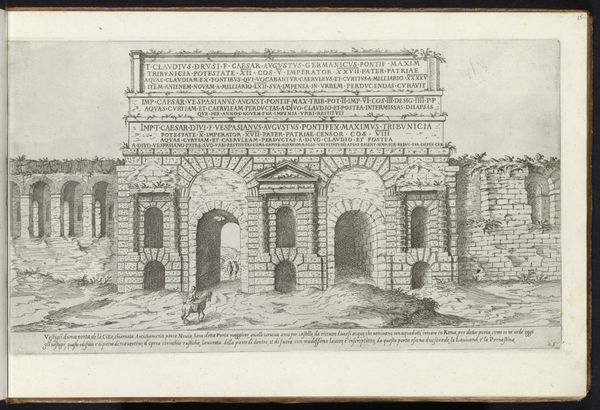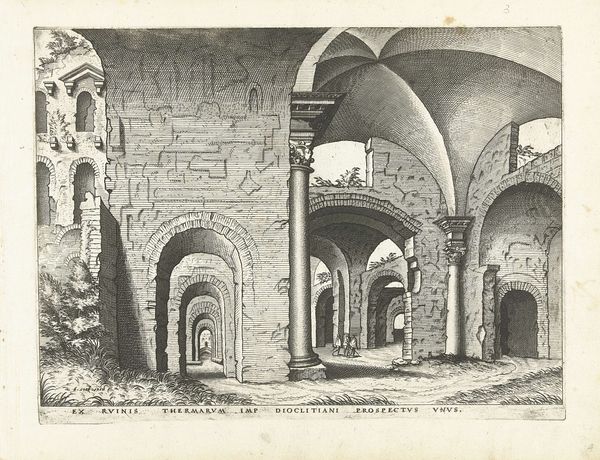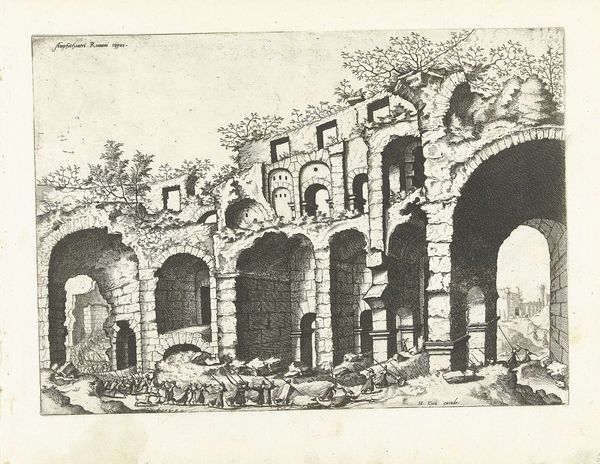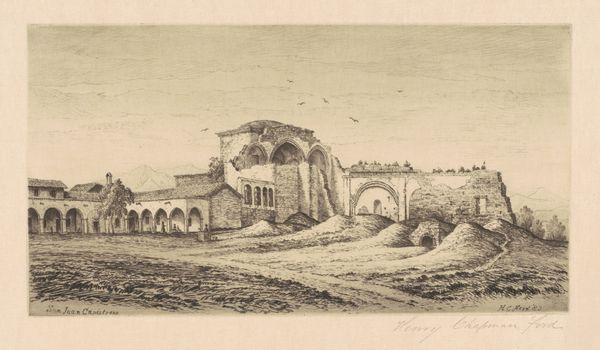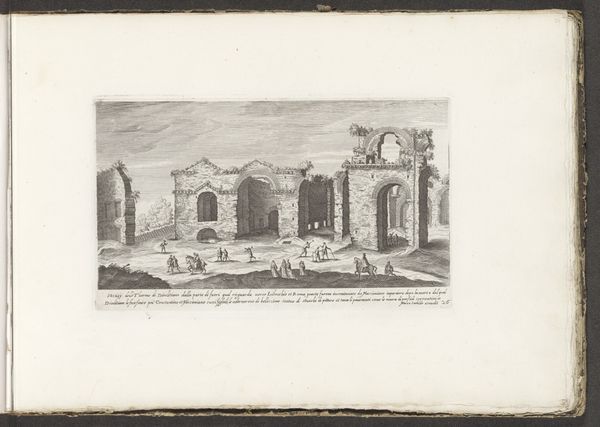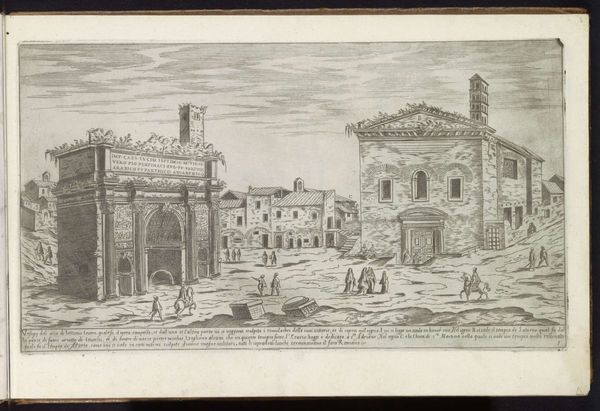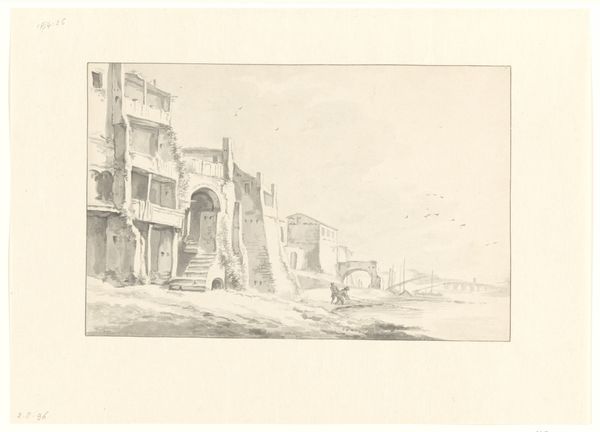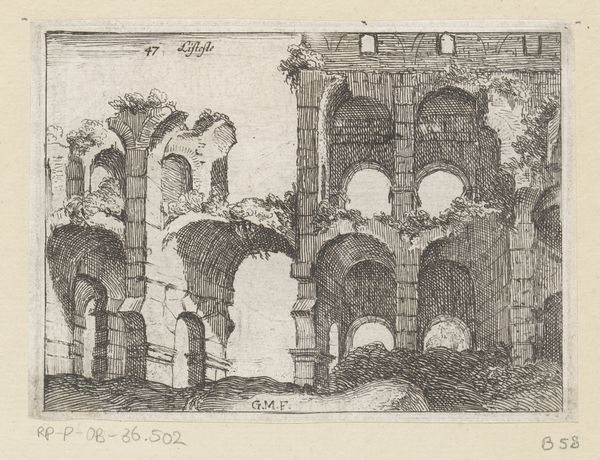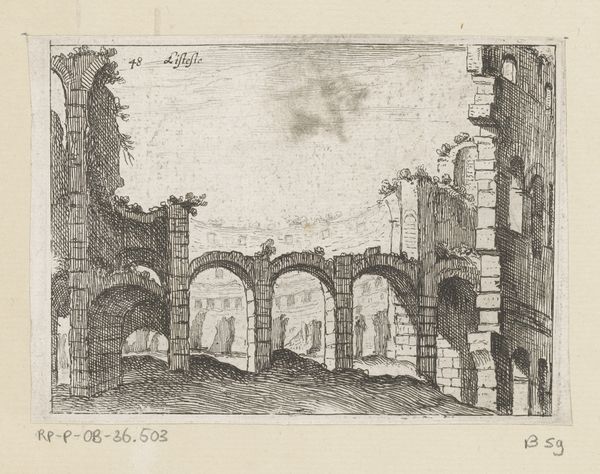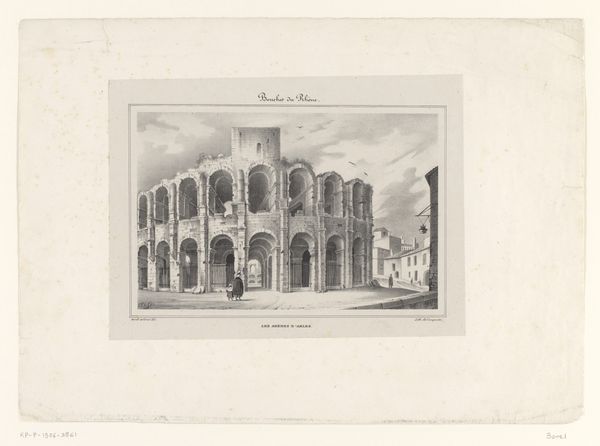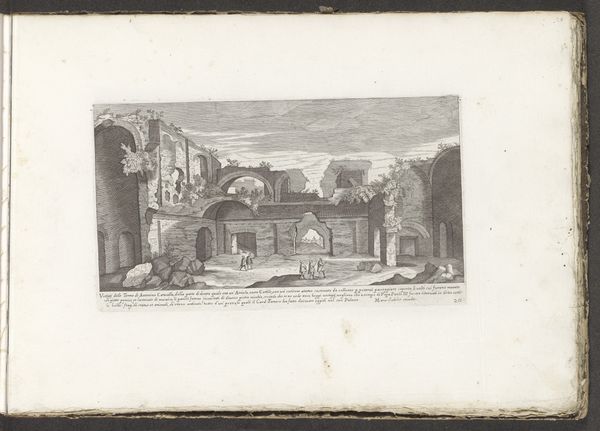
Gezicht op het geruïneerde interieur van het klooster Koningsveld, 1573 1727 - 1733
0:00
0:00
drawing, print, etching, architecture
#
drawing
#
baroque
# print
#
etching
#
landscape
#
geometric
#
line
#
history-painting
#
architecture
#
realism
Dimensions: height 80 mm, width 115 mm
Copyright: Rijks Museum: Open Domain
Curator: The etching before us, created by Abraham Rademaker between 1727 and 1733, depicts the ruined interior of the Koningsveld monastery, dated from 1573. The artist captured a haunting, almost spectral scene using a stark linework technique. What is your initial response to this artwork? Editor: Well, the ruins certainly evoke a sense of loss, of vanished power, but there's also something stubbornly resilient about the surviving structure. It makes you think about what exactly happened here, who suffered and why. Curator: Indeed, ruins hold so many layers. The very shapes of the arches, though fragmented, echo gothic and baroque architectural symbolism. Do you find any significant meaning within this particular piece of architecture that Rademaker highlights? Editor: The decay feels pointed. We’re looking at what remains after, most likely, iconoclasm during the Reformation – and so, the deliberate destruction of religious symbols and buildings, which resonates with histories of marginalized groups, of erasing cultures. The geometric lines that define the image carry an ironic significance because of this collapse of the original structure. Curator: Precisely. And those small human figures placed within the openings offer a visual reference to the monumental presence this monastery must once have possessed. Their presence allows us to think about cultural memory, about the lives interwoven with this space, but now just whispers from the past. It reflects on the cycles of rise, fall, and the lingering echo of historical spaces on collective memory. Editor: I appreciate how it prompts one to think about that relationship between architectural ruin and social ruin, and also the seeds of what grew in its place. How power shifts, changes form. It acts as a sober reminder about cycles. Curator: I find myself reflecting on this idea of finding beauty in devastation. Editor: It reminds us that nothing stays, neither triumph nor defeat.
Comments
No comments
Be the first to comment and join the conversation on the ultimate creative platform.
